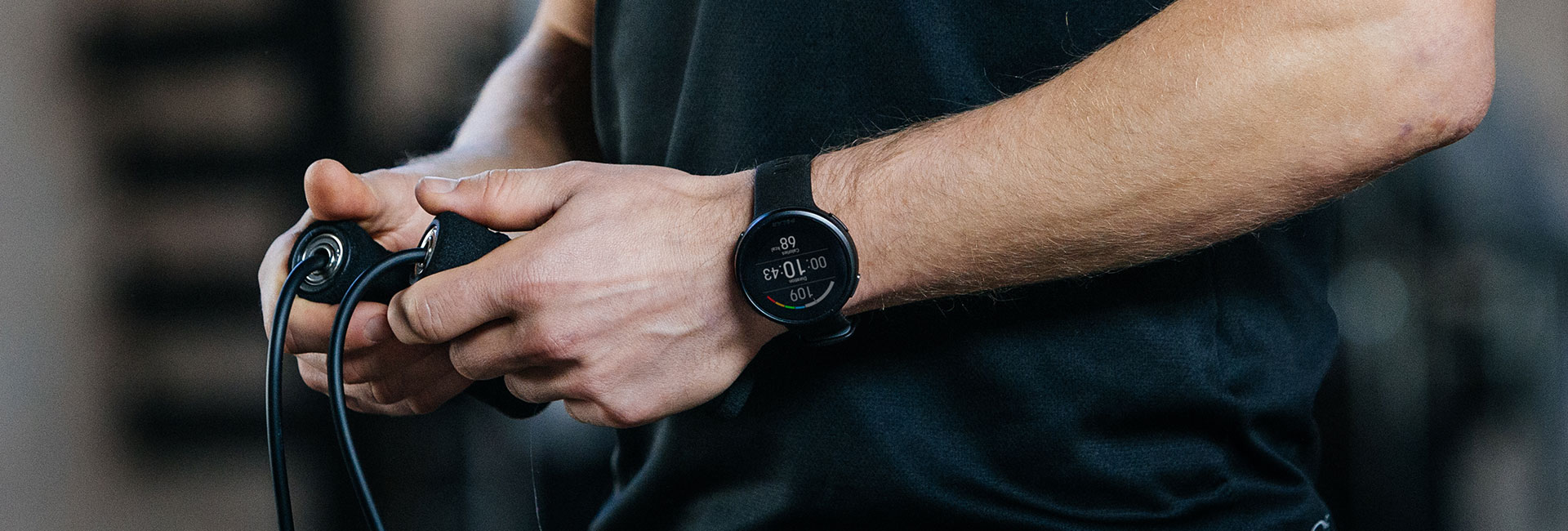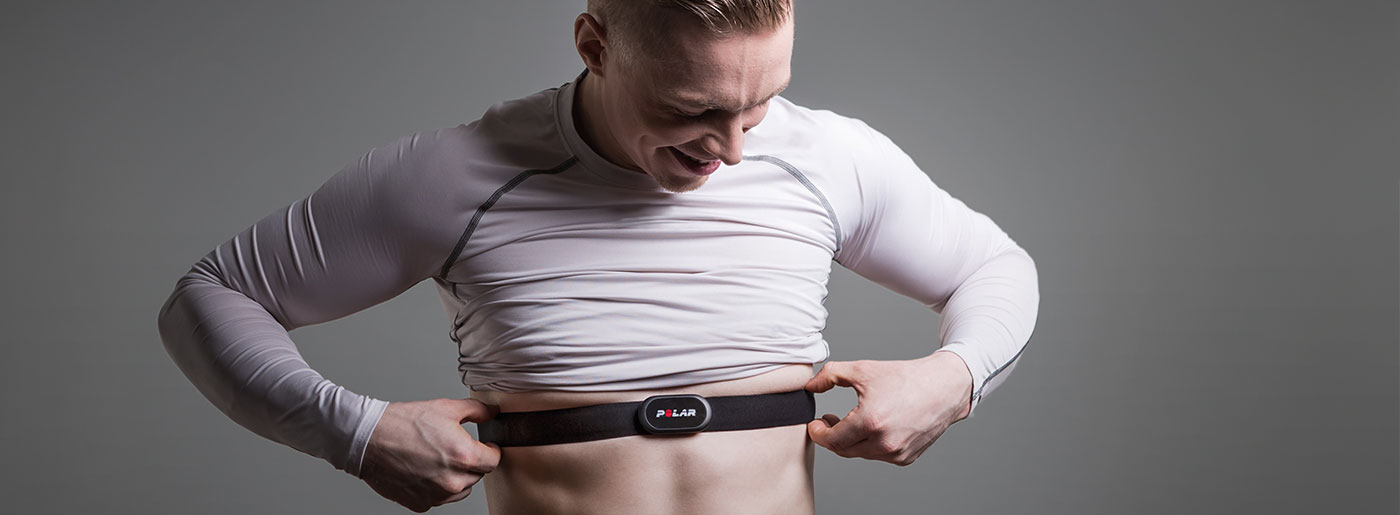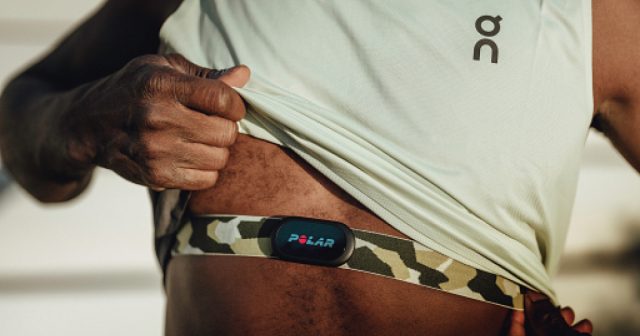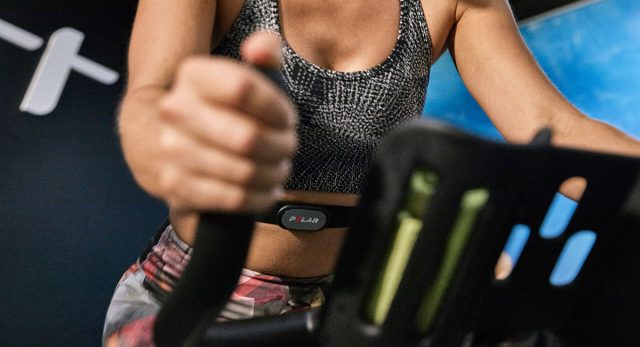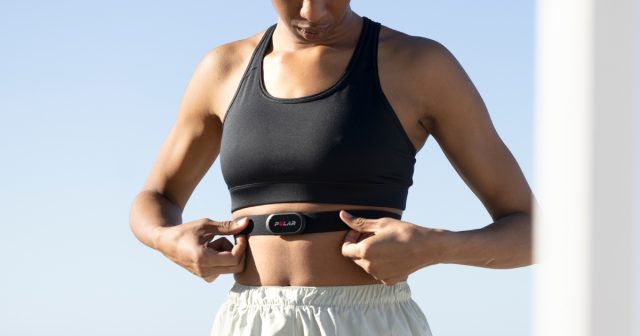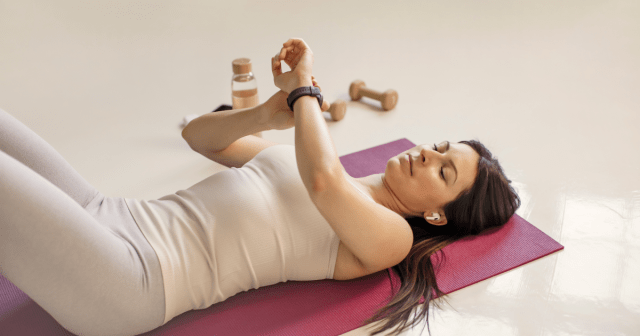Your heart is by far the most important muscle in your body and keeping it strong is essential for your overall health. Yet, when we think about working out, we’re usually focused on strengthening our most visible muscles (yes, flex those biceps!). Exercise also helps keep our heart in peak condition too, so how can we tell how healthy our heart is? This is where understanding your heart rate makes all the difference.
What is heart rate?
We all know what our heartbeat feels like. That pounding in your chest as you’re about to speak in front of an audience or after you’ve run for the bus – that’s our heart working overtime. Usually, we don’t notice it but our heart is, of course, always beating. It’s the essential sign that we’re alive.
So what exactly is your heart rate? It’s a measurement that tells you how many times your heart beats per minute (BPM). By counting these beats, we can gain a unique insight into our health and fitness. Has your doctor ever listened to your heart with a stethoscope? This is what they’re checking.
You can check your heart rate by finding the pulse in your neck or wrist and counting how many beats happen in 15 seconds. Then multiply that number by four to calculate your BPM.
For the most accurate measurement, use a heart rate sensor on your chest or a fitness watch that can monitor your wrist-based heart rate. You won’t need to do the maths as your device will track your heart rate data for you.
Average heart rate
As with everything in life, there’s no such thing as normal when it comes to your heart rate. Everyone is different because we are all unique, with a varying combination of ages, fitness levels, and lifestyles.
However, when it comes to the average heart rate for adults, the metrics detailed below are a great way of measuring the fitness of your heart and seeing how it both compares to the averages and changes over time. By measuring your heart rate at different times, such as when you’re resting and where you’re active, you can not only track the health of your heart but create a training plan to enhance its performance.
Maximum heart rate
Have you ever pushed yourself to the max? Sweated until you felt like you could sweat no more? Chances are you were working out at the most intense level that your heart could take.
It’s possible to measure your maximum heart rate (MHR) when you’re working out like this but you can estimate it as well. Subtract your age from 220 (such as 220-30 years=190 MHR) and this should give you a general idea of what your MHR is.
Of course, there are other factors apart from your age that could influence your MHR. Your fitness level, whether you’re stressed or taking any medication that affects your heart rate (such as beta-blockers) will affect what your result is – but the above equation is a good guide.
Most well-trained athletes have a resting heart rate of around 40 beats per minute.
Resting heart rate
It’s not surprising that the opposite of your MHR is your resting heart rate (RHR). However, it’s interesting to know that this particular measurement is one of the best ways of understanding your general health and aerobic fitness level. Yes, by relaxing you can tell how your heart works when it’s active!
It’s easy to measure your RHR by checking your pulse first thing in the morning and calculating your BPM as detailed above. Make sure it’s before you’ve had your coffee – or even checked your phone if it tends to stress you out. The idea is to do this measurement when you are completely relaxed.
The average healthy adult will have a RHR of between 60 to 100 BPM. If you’re very fit and your number is below 60, don’t worry. Most well-trained athletes have a RHR of around 40 BPM.
Sleeping heart rate
While your heart rate during sleep isn’t a metric that provides an insight into your general health, there are other ways to understand what your rest and recovery are like overnight.
Detection of your sleep and wake states through your movements at night can give valuable insights about your snooze time, especially in terms of length and any disruptions. Disorders like Sleep Apnea, where you temporarily stop breathing for a moment during the night, can put a strain on your heart so it’s valuable being aware of your sleep habits.
Heart rate zones
There are five heart rate zones and these are determined by your MHR. Once you know was your max is, you can calculate these different stages as a percentage of this total.
For example, zone 4 is the ‘hard zone’ and this is where you’ll be working out at 80-90% of your MHR (almost your max but not quite). Whereas, zone 2 is the ‘light zone’, which is where you’ll be working out at 60-70% of your MHR (sounds easy but it’s one of your best regular exercise zones).
By creating a training plan that incorporates different exercises in this range, you will get the most out of what you put in.
Target heart rate during exercise
Your MHR and heart rate zones are excellent guides for formulating a training plan because they will help make sure you’re including a variety of workouts. Your target heart rate while exercising is between 50% to 85% of your MHR, as this will improve your cardiorespiratory endurance. So by creating a training plan that incorporates different exercises in this range, you will get the most out of what you put in.
Aerobic
Often the word aerobic makes us picture groups of women in the 80s doing repetitive exercises in colorful lycra. However, the term means ‘with air’ and refers to anything that increases your breathing and heart rate for a sustained period. Think running, swimming, cycling, or other types of cardio. The opposite of aerobic is anaerobic, ‘without air’ – exercises that need extreme effort for a brief moment, such as lifting weights or HIIT workouts.
Aerobic threshold training is a great way of using low-intensity exercise for long workouts. Think easy runs or cycles that you can maintain at a steady pace for a prolonged period. By continually checking your heart rate throughout your workout and ensuring it remains at a consistent, moderate level will help you stay in your aerobic threshold zone.
Even a healthy, stable heart will vary substantially between beats.
Heart Rate Variability
You would be forgiven for thinking that your heartbeat is as consistent as a ticking clock, keeping the same timing with each pulse. In fact, there’s a constant variation with your heart rate but it’s not something you would ever be able to notice in your daily life.
This physiological phenomenon is known as Heart Rate Variability (HRV). As the name suggests, it measures (in milliseconds) the interval between consecutive heartbeats, tracking the variation. Even a healthy, stable heart will vary substantially between beats. Surprisingly, a high HRV score is a sign of a healthy heart.
HRV can show a lot about someone’s physical and mental health. It’s also an excellent tool to use when trying a new training regime as it will indicate how well your body is adapting to it.
A VO2max test is a great way to tell if you’re aerobically fit because it looks at how your heart, lungs, blood vessels, and muscles are working together.
VO2max
So your heart isn’t the only vital organ you use when exercising. Your lungs work with your heart to make sure a sufficient volume (V) of oxygen (O2) pumps through your blood to muscle tissue, which burns oxygen to keep you going. So your VO2max is a way of measuring the maximum rate at which oxygen is used by your body during maximum work.
A VO2max test is a great way to tell if you’re aerobically fit because it looks at how your heart, lungs, blood vessels, and muscles are working together. If you have a high VO2max score, then it means your cardiovascular system and muscle have been conditioned to, for example, run further for longer.
So how do you find out what your VO2max score is? A lab test using a treadmill or stationary bicycle is the standard way of measuring this. Alternatively, you use a heart rate sensor to estimate what your score would be with a Polar Fitness Test.
If you liked this post, don’t forget to share so that others can find it, too.
Or give it a thumbs up!
I like this article
Please note that the information provided in the Polar Blog articles cannot replace individual advice from health professionals. Please consult your physician before starting a new fitness program.
